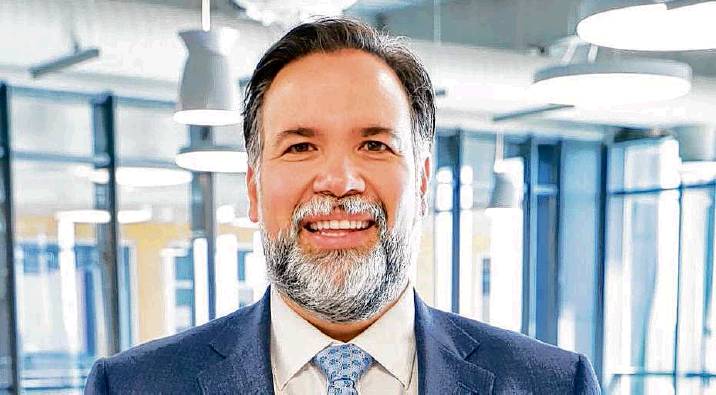OP-ED
Let's talk about innovation
By Daniel Covarrubias DIRECTOR OF TEXAS A&M INTERNATIONAL UNIVERSITY’S TEXAS CENTER FOR ECONOMIC AND ENTERPRISE DEVELOPMENT
As our global and local communities continue to confront an increasingly enduring reality, COVID-19, that has, at some point or another, paralyzed a significant part of all of our lives, (from the quotidian to the essential), a recent Ford Motor Company television advertisement titled “What Innovation Looks Like” caught my attention. It got me thinking about innovation and its importance to our current livelihood, and business’ makeup.
This crisis and its accompanying impacts are referred to in the world of innovation as a Wild Card, which refers to an unexpected event of low probability and high impact. In their article, “What are the biggest threats to humanity?” (2019, BBC), Simon Beard and Lauren Holt put forward a 1.5% probability of a severe flu pandemic or the like happening.
In financial terms, we identify this type of event as a Black Swan, something that can’t be predicted and has a profound effect on markets…or a Grey Rhino, which is a known economic risk that people choose not to act on despite the potential for harm. And while debate remains regarding the categorization of the COVID-19 crisis as a Black Swan or a Grey Rhino (it has characteristics of both: catastrophic effects and was caused by something predicted to happen sooner rather than later), the course of action remains the same.
In the event of a Wild Card, it becomes essential to contemplate potential scenarios before they occur, and once they do, the reaction speed is critical. To accelerate recovery from a Wild Card, it is vital that we have access to and understand the data, as well as take advantage of exponential technologies. These extraordinary events will and do require exceptional, creative, and innovative approaches.
Previously, the formulation, implementation, and evaluation of strategic planning directives used to be enough for companies and people to face these challenges in an orderly manner. Today, we see how strategic planning is moving from a planning concept to a concept of constant adaptation; therefore, companies and organizations must adapt quickly and systematically if they are to stay ahead of this new reality.
Darwin’s theory of survival of the fittest can be applied to businesses as well. Innovation research concurs that companies that are surviving these volatile, uncertain, complex, and ambiguous times are not the strongest, the most intelligent, or those with the best talent, but those who best adapt to change and prioritize innovation as a central focus or direction in strategic adaptation.
There is no better way to survive and prosper in this new era than through an innovation strategy. Jack Welch, the late CEO of the General Electric Company, used to say “if the rate of change on the outside (of the company) exceeds the rate of change on the inside, the end is near;” the only question that remained was when the end was going to take place.
But what exactly is innovation? The following is a brief and comprehensive definition that I often use: innovation is all change, based on knowledge, that generates value, and that value is measured in money or some increase in productivity or efficiencies within companies. Innovation is characterized by incorporating risks.
You start to innovate when you face uncertainty, either because of product differentiators or because something has never been done before. Let’s be clear, though, there is no innovation in just changing things.
Xavier Ferras, ESADE Ramon Llull University professor of Operations, Innovation and Data Sciences, states that change by itself is not innovation. Change must contain some risk and pursue a competitive advantage in times of uncertainty and volatility; we are required and expected to generate innovation strategies, but not in the traditional sense of strategy.
When I speak of innovation strategy, I am not talking about a company’s mission, vision, or values; these strategies can no longer be that. They can no longer be a long-term strategic plan; instead, they need to become systematic mechanisms. Without this systematicity, innovation becomes an activity disconnected from a company’s day-to-day activities, carried out only by impulses rather than organized mechanisms.
Innovation constitutes one of the fundamental mechanisms in the transformation of a society and economy. Innovation can create greater well-being, stability, and competitive and sustainable growth. An innovation culture can inspire citizens as well as the productive and service sectors of the community. This culture would favor an ecosystem that promotes new companies and develops a business foundation that encourages local employment growth and integrates businesses into a stable economy.
As is learned from past crises and the current and extensive economic impacts of a global pandemic, time and progressive actions are of the essence. Innovation is key to capitalizing on the underlying shifts and disruptions that have irrevocably changed the way businesses will compete and continue to do business over the following decades.
Local and regional firms could benefit by applying creative and innovative solutions that adapt to digital innovation and tech-based scenarios that are now becoming part of their daily managerial and administrative tasks. Students require a comprehensive academic overhaul that includes innovation techniques to prepare them as 21st-Century employees or entrepreneurs to competitively embrace evolving technological and business innovation advancements.
Finally, while there may be many classifications, adjectives, and labels to characterize innovations, I use the following four: magnitude, degree of aperture, use of technology, and nature. Magnitude refers to whether it's an incremental or radical innovation. The degree of aperture refers to open and closed innovations; the use of technology to making them technological or non-technological innovations, and by the nature of the innovation, identifying them as marketing, product, organizational, or process innovation. I'll discuss each of these classifications in greater detail and with specific business case examples in the future.
Dr. Daniel Covarrubias is the Director of Texas A&M International University’s
Texas Center for Economic and Enterprise
Development housed in the A.R. Sanchez, Jr. School of Business.
